88 North St - Available June 1st 2026
- 1 unit available
- 4 bed
- Amenities
In unit laundry, Pet friendly, 24hr maintenance, Carport, and Recently renovated

Vermont appeals to newcomers for its sparkling lake towns, winter wonderland, low population, and outdoor recreation. Although most of the state is filled with small cities and rural areas, you can also find cozy towns with arts, culture, and fine dining.
When you move to Vermont, you enjoy a high quality of life and a relatively low cost of living. Before you start packing, here's what I know before moving to Vermont to live your best life.
Vermont's cost of living is above average for the rest of the country but very affordable compared to its New England neighbors, like New Hampshire. Whether you want to live in a small town near the forest or in the city, you can find the perfect place for you in Vermont.
To give you an idea of what to expect in Vermont, we collected the median rental prices in some of the state's most populous cities, including Rutland, Bennington, Essex Junction, and South Burlington.
| City | Starting Rent |
|---|---|
| Rutland, VT | $950 |
| Bennington, VT | $1,250 |
| Essex Junction, VT | $1,600 |
| South Burlington, VT | $1,650 |
Vermont winters are notoriously cold, with snow that extends well into spring. You should account for a higher utility bill during the coldest months, although summers are mild. Learn more about what to expect from utilities in an apartment.
Vermont's home prices are relatively affordable, especially for the Northeastern housing prices. Currently, the median home prices in Vermont are $421,400. According to the Census Bureau, the median household salary in Vermont is $78,024. That figure leaves flexibility to find an affordable city for you and still enjoy a Vermont lifestyle filled with outdoor fun.
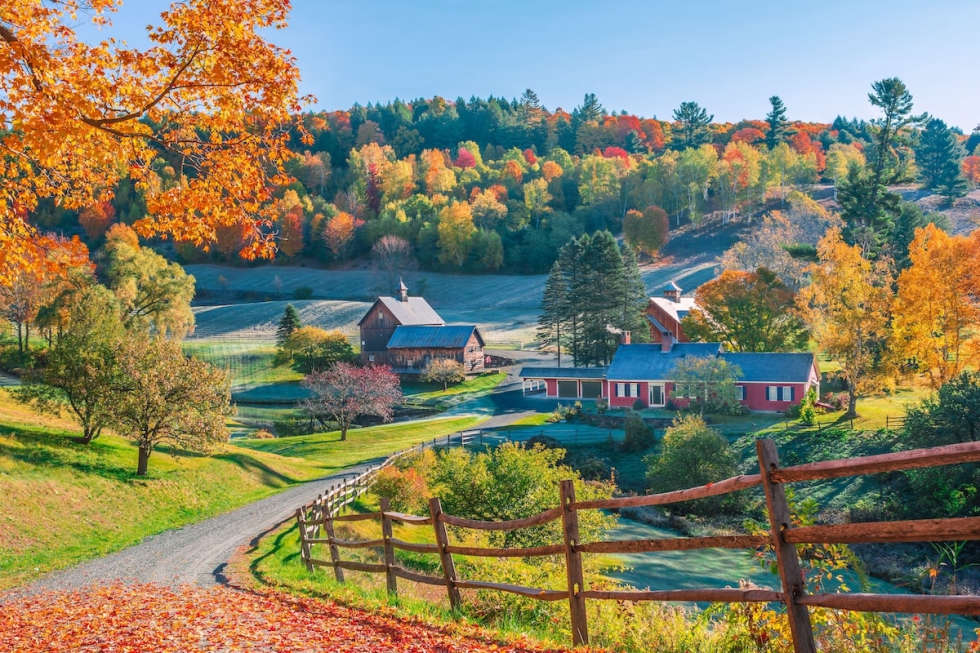
The unemployment rate in Vermont is 2.6%, which is significantly lower than the U.S. average of 4.1%. Vermont's job growth is also positive, which is great news for job seekers. If you're looking for work in Vermont, know that its economy heavily relies on tourism, manufacturing, agriculture, and service sectors.
The Vermont Public Transportation Association (VPTA) oversees the state's public transportation system. There's also a limited Vermonter Rail offered by Amtrak.
Depending on where you live, you can find some decent public transportation. But to make the most of living in Vermont, you need a car to get around.
The MIT Living Wage Calculator shows an average annual transportation cost of $10,602 for a single individual. Larger families with two working parents and two children can anticipate paying around $17,784 in annual transportation costs.
Vermont earned the nickname Green Mountains for a reason, which runs along the state's western edge from north to south. You'll also find idyllic lakes at Hudson River, Lake George, and Lake Champlain. Vermont
Vermont is the second least populated state in the country, with just 648,493 residents. The largest cities are Burlington and Essex, with 44,742 and 17,516.
Founded on March 4th, 1791, during the American Revolutionary War, Vermont also was initially settled by both the British and French. It also holds the distinction of abolishing slavery before any other state. During the mid-19th century, Vermont was also a source of abolitionist sentiment, although it still relied on southern cotton.
Today, Vermont is known for its forests, green mountains, snow skiing, manufacturing, and agriculture. The state also has a growing tourism industry and attracts 13 million visitors each year, which easily topples the entire population of Vermont.
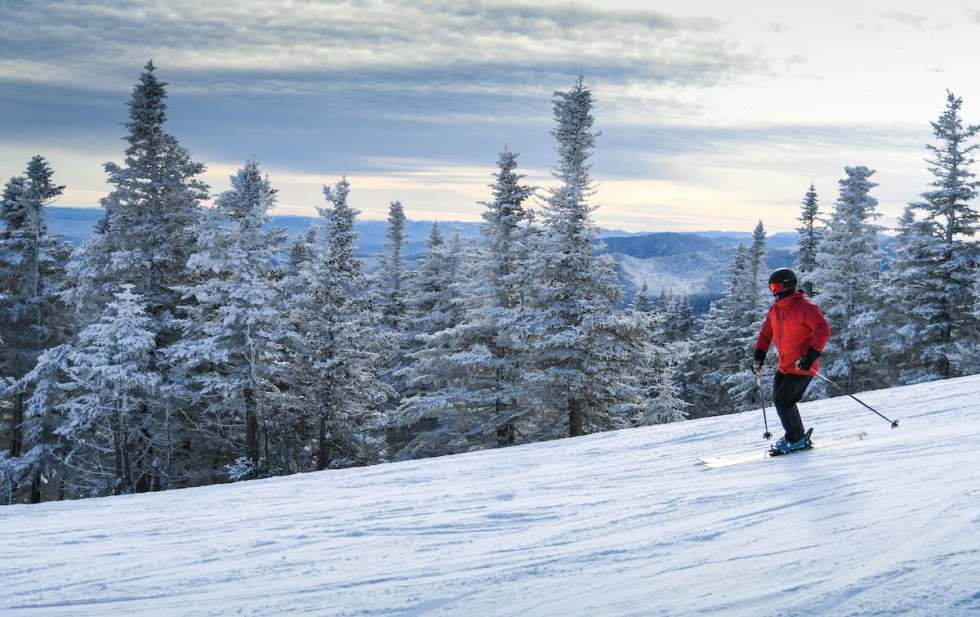
Vermont is the proud birthplace of Ben & Jerry's, the iconic ice cream company known for its quirky flavors and social activism. Founded in 1978 by Ben Cohen and Jerry Greenfield, the company began in a small scoop shop in Burlington, Vermont, and has since become a global phenomenon.
Ben & Jerry's is more than just delicious ice cream. They're deeply rooted in their Vermont heritage, using local ingredients and supporting local dairy farmers. Their commitment to social responsibility, from advocating for fair trade practices to promoting environmental sustainability, resonates with many consumers, further solidifying their place as a cherished Vermont brand.
So, whether you're a lifelong fan or a curious newcomer, Vermont offers the opportunity to experience the birthplace of Ben & Jerry's and indulge in a scoop (or two) of their iconic ice cream amidst the scenic beauty of the Green Mountain State.
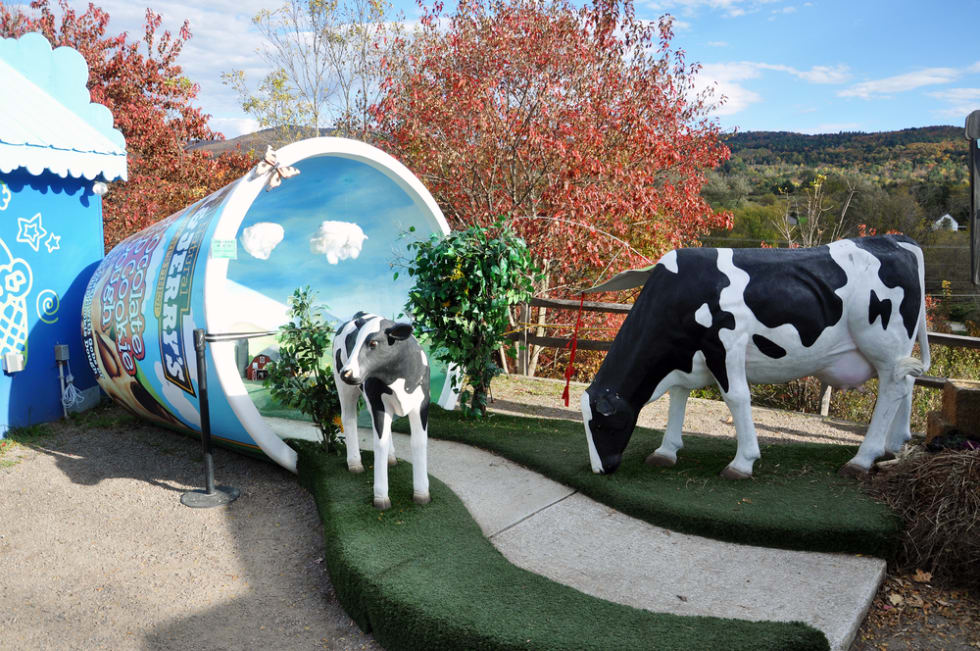
Venture into Vermont, and you'll encounter a landscape dotted with sugarbushes, whispering tales of tradition and deliciousness. The state reigns supreme as the largest producer of maple syrup in the US, a title it has held for decades.
Maple syrup production is deeply woven into the fabric of Vermont's identity. From the majestic sugar maple trees that dot the landscape to the historic sugarhouses where sap is transformed into liquid gold, maple syrup represents more than just a sweet treat. It's a symbol of heritage, a source of livelihood for many families, and a vibrant cultural touchstone.
So, during your visit to Vermont, don't miss the opportunity to savor the unique taste of authentic maple syrup, witness the fascinating process of its production, and appreciate the vital role it plays in the state's history and culture.
Vermont boasts a unique distinction—its capital, Montpelier, is the least populated capital city in the United States. With a population of just over 8,000, Montpelier offers a charming small-town atmosphere unlike any other state capital.
Instead of towering skyscrapers and bustling crowds, Montpelier features a walkable downtown, historic architecture, and a vibrant sense of community. This unique setting allows for a more personal and accessible government experience, fostering a strong connection between residents and their elected officials.
While Montpelier may lack the hustle and bustle of larger capitals, its charm, historical significance, and close-knit community make it a truly special place to visit or even call home.
Vermont's summers are warm and humid, with an average high of 75°F, making it a comfortable place to get outdoors. Even at a peak high, the temperatures usually don't rise past the mid-80s. Despite being a skiing state, Vermont still attracts tourists for its festivals, hiking, and watersports during the summer months.
Vermont's winters are cold and often harsh, with highs of 34 degrees and lows of 9 degrees. Tourists and locals take advantage of the dropping temperatures to hit the slopes. If you love skiing, you're in the right place. Vermont receives more snow than any other state and sees nearly 90 inches per year.
The colorful foliage and spring blooms in Vermont are a must-see. There's plenty of brilliant weather to hike, golf, bike, and enjoy the sunshine in Vermont.
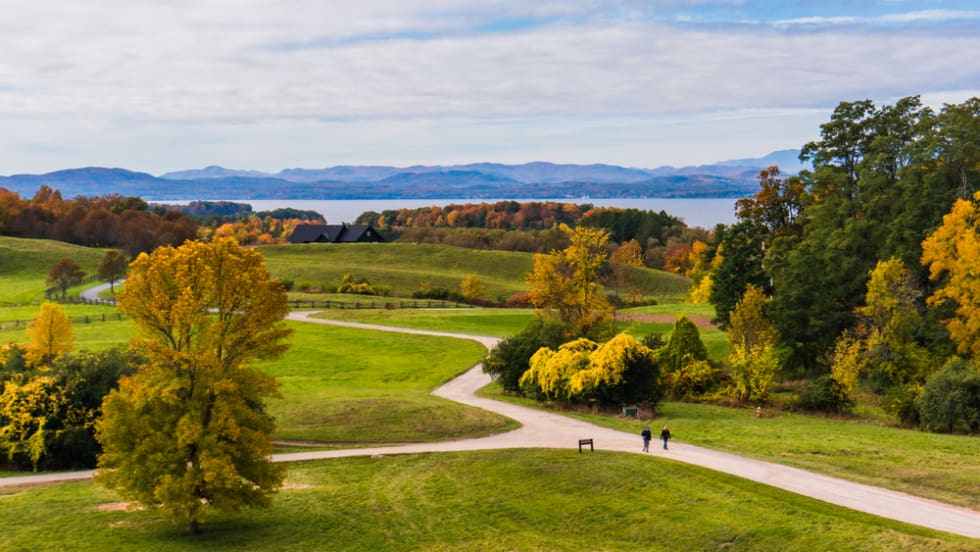
The best Vermont attractions are found in the great outdoors. Once an old railway, The Burlington Bike Path was converted in the 1970s and crossed across beaches and parks for views of Lake Champlain and the Adirondacks.
Lake Champlain is also a popular stop and designated "Forever Wild" to protect it from overdevelopment. There are also options for hiking, camping, boat cruises, and golfing. Moss Glen Falls provides stunning views on a hike past an oversized beaver dam and signature waterfalls.
For options beyond nature, Burlington Church Street Marketplace offers a flea market, shops, dining, and more. The Saxtons Distillery is the spot for sapling maple bourbon and snowdrop gin, among other local concoctions.
Vermont's iconic food embraces cheddar cheese, maple syrup, and Ben & Jerry's ice cream. You'll find plenty of options for farm-to-table restaurants, fresh produce, local wineries, and breweries. The Vermont Farmers Markets isn't afraid of a little cold and is still open during the winter months to sell artisan foods and local options across 60 vendors.
The Burlington Beer Company is among the most popular places to gather, including the Crooked Ram and Mike's Tiki Bar. Vermont's smaller cities will also surprise you. Bellow Falls is home to just over 3,000 residents but offers several renowned music venues and unique flicks at the Bellows Falls Opera House.
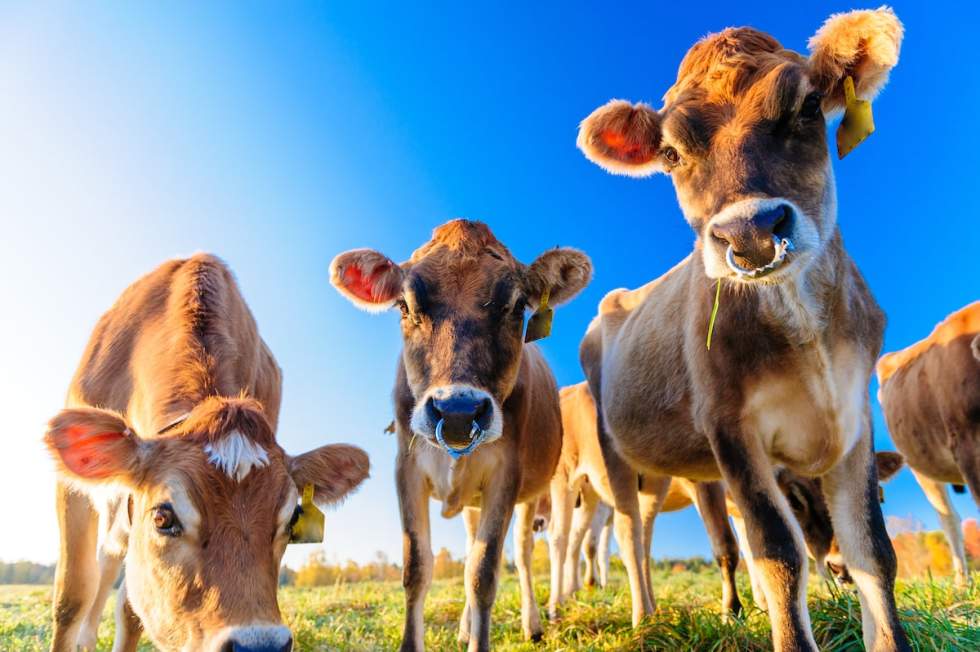
Vermont's annual festivals are staples of both locals and visitors who come back every year. Some of their renowned events include the Stowe Winter Carnival, Vermont Maple Festival, and Burlington Discover rJazz Festival. Art lovers will find plenty to see and do at the Vermont Quilt Festival and Vermont Festival of the Arts.
Vermont doesn't currently have any large, professional sports franchise. But they are home to the beloved Vermont Lake Monster, a minor league baseball team. Despite the lack of pro representation, Vermont is still big on sports and recreation, like horseback riding, hockey, snow skiing, lacrosse, and racquetball.
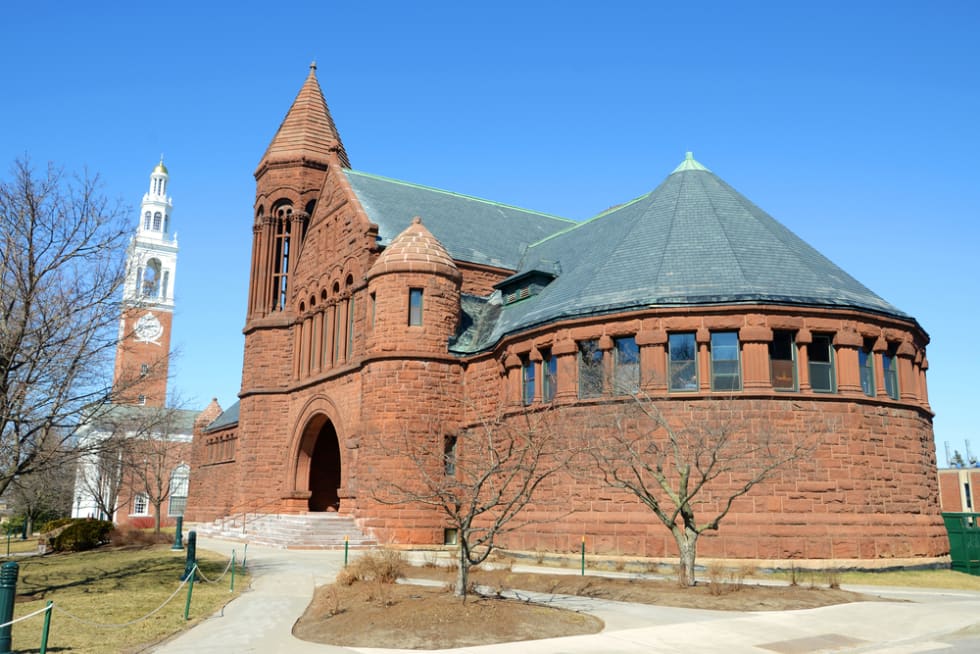
Vermont is home to 22 colleges and universities, in addition to out-of-state colleges with Vermont campuses. Here are just a few of the estate's esteemed institutions to choose from.
University of Vermont
The University of Vermont is known for its majors in natural resources and conservation, social sciences, biological and biomedical sciences, and business. Students also flock to the university for its access to nature, snow skiing, and indie music. Burlington is also home to a technology hub with a solid dining scene.
Castleton, University
Castleton University holds claim as the 18th oldest institution of higher education in the United States and has a small average class size of 17. Founded in 1787, the 165-acre campus is now home to two LEED Gold certified buildings on campus. Some of its areas of study include accounting, archeology, anthropology, art, athletic training, biology, criminal justice, and computer information systems.
Champlain College
The University of New England is situated along the stunning coastline where Sacco Bay meets the Atlantic Ocean in Biddeford. It's among the highest-rated institutions by The Princeton Review and is known for attracting aspiring health professionals.
Middlebury College
Middlebury College was founded in 1800 and is known as a highly regarded classic liberal arts program. Some of its majors include leadership in language education, environmental studies, and international studies. Middlebury also ranks as a "little Ivy" college, indicating it's on par with big Ivy League universities.
Norwich University
Norwich University is the oldest private military college in the country and the birthplace of the ROTC program. Its most renowned programs include criminal justice and engineering. The university is also responsible for training Air Force Reserve Officers' Training Corps recruiting for the entire state of Vermont.
Not sure where to live in Vermont? Here are some cities to choose from.
Rutland
Since 1794, Rutland has continuously published the state's oldest newspaper, the Rutland Daily Herald. The city's postcard-perfect historic downtown hosts year-round community events, art, and music. Locals and visitors stop by the Vermont Farmers Market in Depot Park, Paramount Theater dating back to 1912, and the Friday Night Live concert series. You're also not far from lakes, skiing, hiking, biking, and forested parks.
Rutland is also among the cheapest places to live in Vermont. Apartments start at $950 a month.
Essex Junction
The village of Essex Junction is contained within the larger town of Essex. You'll catch a small-town vibe with quick access from your location between the Green Mountains and Lake Champlain. Locals have their choice of golf, brews at the 1st Republic Brewing Company, a small but tasty dining scene, and hot air balloon rides.
Burlington
Burlington is an attractive option for college students attending the University of Vermont and young professionals growing their careers. The city is home to eleven breweries, hiking trails, museums, music venues, a zoo, and dozens of city parks. Burlington is also known as the birthplace of Ben & Jerry, which all started in an old gas station turned ice cream shop.
South Burlington
South Burlington is home to young professionals and families looking for a high quality of life and access to outdoor recreation. You have access to Red Rocks Park, galleries, museums, and the unique Island Line Rail Trail surrounded by water on both sides. South Burlington is also a quick ride to the mountains and is frequently called Vermont's #1 Sports Town.
While Vermont boasts a lower cost of living compared to other New England states, potential residents should be aware of its competitive housing market. This is especially true in popular areas or those with limited housing options. Be prepared to encounter higher housing costs and potentially face a competitive bidding process when purchasing a home. Renting can also be challenging in some areas, so thorough research and proactive planning are crucial.
However, the competitive landscape shouldn't deter you entirely. Consider exploring less populated regions or smaller towns where housing options might be more readily available. Additionally, working with a local realtor can offer invaluable guidance and local expertise in navigating the market successfully.
One of Vermont's greatest strengths lies in its tight-knit communities. Locals take immense pride in their state and its unique character. This manifests in a strong sense of neighborliness and a willingness to support local businesses and events. As a newcomer, consider ways to integrate into the community and build connections with your neighbors.
Participating in local events, volunteering with community organizations, or simply striking up conversations with neighbors at the farmers' market are excellent ways to experience the welcoming spirit of Vermont communities. Embrace the opportunity to connect with others, learn about local traditions, and contribute to the vibrant social fabric of your new home.
Despite its predominantly rural landscape, Vermont is home to a surprisingly rich and diverse cultural scene. From internationally renowned summer music festivals like the Manchester Music Festival to vibrant local art fairs showcasing the works of talented artists, there's something to satisfy every cultural interest.
Historical museums, like the Shelburne Museum and the Vermont Historical Society, offer intriguing glimpses into the state's rich past. Additionally, bustling farmers' markets are not just places to find fresh produce, but also vibrant community hubs where you can experience local music, crafts, and cuisine. This unexpected depth to Vermont's cultural scene adds an enriching dimension to life in the state.
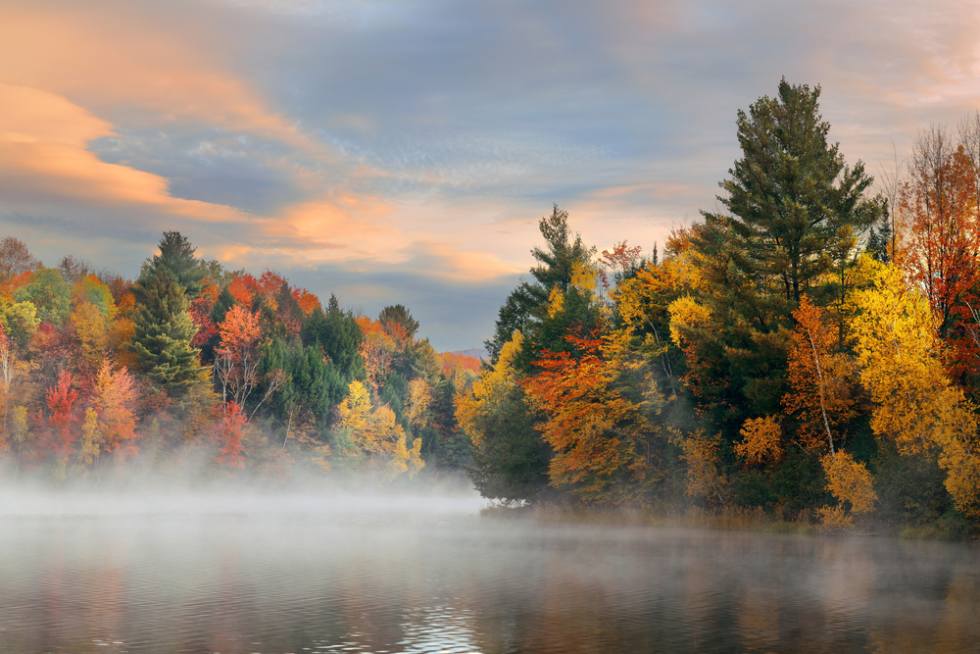
Be prepared to experience all four seasons in full force when moving to Vermont. Each season offers its unique charm and a plethora of activities. Witness the breathtaking beauty of the fall foliage as the state transforms into a vibrant tapestry of red, orange, and yellow. Embrace the winter wonderland with opportunities for skiing, snowboarding, and cozy evenings by the fireplace. Spring brings the joy of witnessing nature come alive again, while summer allows you to enjoy the warmth, explore scenic hiking trails, and cool off in refreshing lakes.
Learning to appreciate and embrace the distinct seasons adds another layer to the Vermont experience. Whether you're an avid outdoor enthusiast or simply enjoy the changing scenery, Vermont's diverse seasons offer something for everyone.
The term "Flatlander"" is often used in a playful way to describe someone who has moved to Vermont from elsewhere, especially from a flat or non-rural area!
People from "flatland" areas, such as the Midwest or big cities, might not be familiar with the state's rural lifestyle, self-reliance, or its hilly terrain. The term suggests that the person isn't a native Vermonter and may be seen as an outsider in the eyes of locals.
On the other hand, a "True Vermonter" typically refers to someone who is native to Vermont and has deep ties to the state’s traditions, culture, and rural lifestyle.
Vermont’s love for craft beer runs deep, and it’s not just because the state’s cold winters are the perfect excuse for a cozy brew.
The Green Mountain State has become a hub for small, independent breweries, thanks to its strong local pride and support for small businesses. People here love to back local products, and that’s exactly what Vermont’s craft beer scene thrives on.
Combine that with a tourism industry that appreciates a good pint after a day of hiking or skiing, and you’ve got the perfect recipe for a booming brewery scene.
Plus, the state is home to some legendary brews (we’re looking at you, Heady Topper!), which only encourages more folks to hop on the brewing bandwagon.
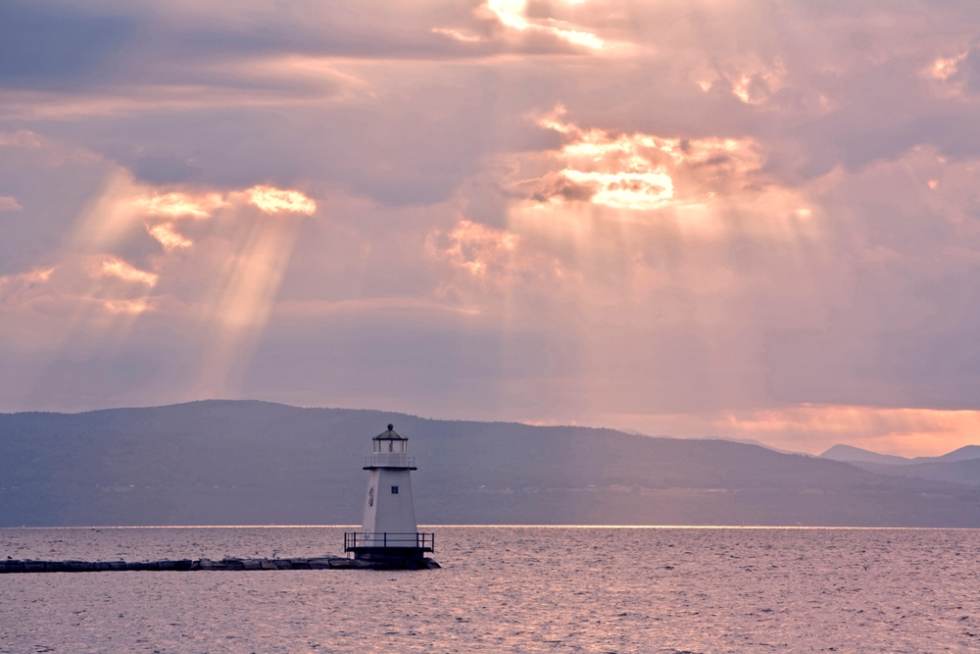
While it’s tough to pick just one, Lake Champlain is definitely a top contender for the most beautiful lake in Vermont. Stretching over 120 miles, this massive lake is surrounded by stunning views of the Adirondacks and the Green Mountains.
Whether you’re into kayaking, sailing, or just lounging on the beach, Lake Champlain offers endless opportunities to enjoy the great outdoors. Plus, the lake has some very picturesque islands, like Isle La Motte, that are perfect for a day trip.
The informal fifth season of Vermont, often referred to as"Mud Season," is exactly what it sounds like—a time of year when the snow melts, and everything turns into a big, muddy mess.
Typically happening in late March to early April, it’s when the snow begins to melt faster than the ground can dry out, creating puddles and, well, a lot of mud. Dirt roads turn into swampy trails, and even the most well-intentioned boots can’t stay clean.
Locals know it’s a bit of a tough time for outdoor adventures, but it also signals the transition into spring. While it might not be the best season for hiking, it’s prime time for maple syrup season, and that makes it all worthwhile.
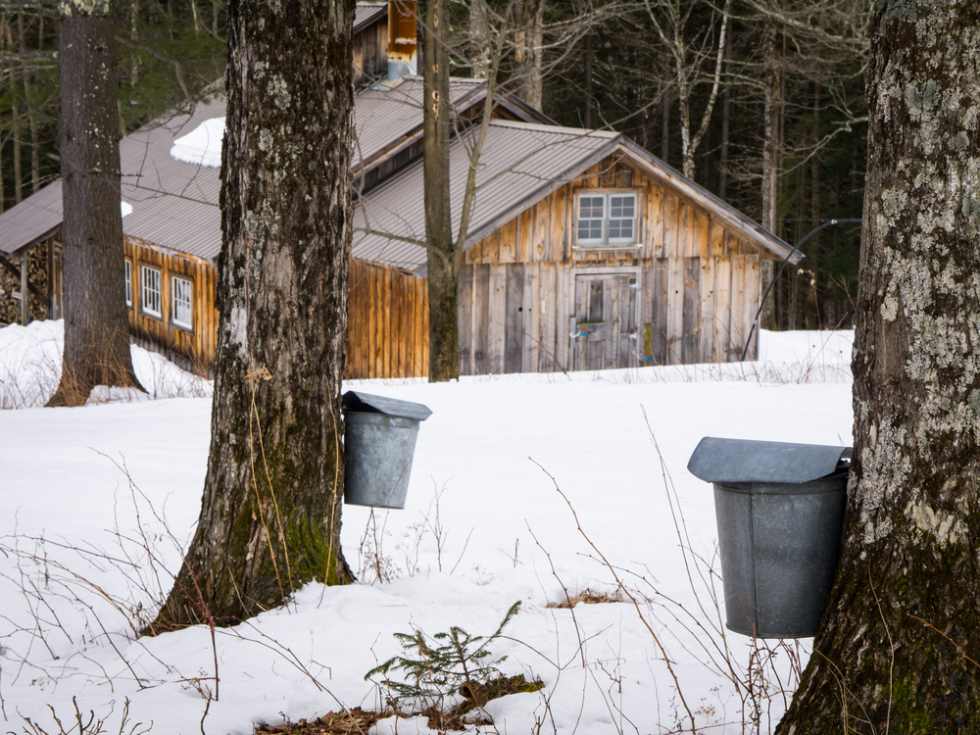
Vermont’s sugar houses are where the magic of maple syrup happens. These little buildings, often nestled in the woods, are home to the syrup-making process that turns sap from sugar maple trees into that sweet, liquid gold we all love.
In the spring, locals tap the trees, collect the sap, and then boil it down in these sugar houses to create syrup. The smell alone is enough to make you want to stay and sip on some fresh syrup!
Many sugar houses even open their doors to visitors during sugaring season (usually March through April), offering tours, tastings, and a chance to see the process firsthand. It’s a Vermont tradition that’s been around for centuries, and no trip to the state is complete without experiencing the charm of a sugar house.
The Long Trail in Vermont is no walk in the park, but it’s totally worth the challenge if you’re up for it! Spanning 273 miles from the Massachusetts border to the Canadian border, this trail is Vermont’s crown jewel for serious hikers.
The difficulty varies depending on where you are, but expect steep ascents, rocky terrain, and some serious elevation gains. The trail can be grueling, especially if you’re hiking the whole thing, but it rewards you with jaw-dropping views of Vermont’s mountains and valleys.
For the average hiker, tackling smaller sections of the trail might be more realistic, and still just as scenic! Whether you’re going for a short day hike or attempting the full trail, be prepared for changing weather and a few tricky spots. Pack the right gear, bring some patience, and you’ll earn some bragging rights (and a seriously sore pair of legs).
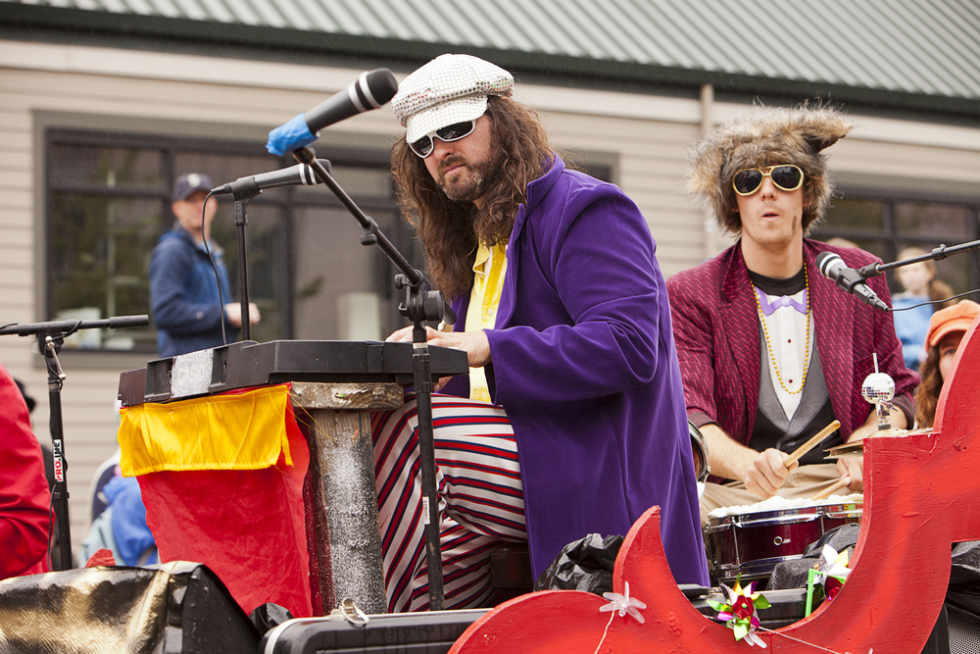
Yes, Phish is absolutely a Vermont band! The iconic jam band was formed at the University of Vermont in Burlington back in 1983. With their roots firmly planted in the Green Mountain State, Phish became known for their experimental live shows and loyal fanbase, often referred to as "Phishheads."
Over the years, they've earned a massive following, but Vermont still claims them as its own. Their connection to the state runs deep, with their early gigs at local spots like Nectar's and the fact that many of the band members still call Vermont home. If you’re ever in Burlington, you might just run into one of the band members or catch a surprise performance!
Hunting season in Vermont is a big deal, and it’s taken seriously by locals. With the state’s abundant wildlife, including deer, turkey, and moose, hunting is both a tradition and a way of life. The season typically runs from early fall through winter, depending on the type of game. During this time, you’ll see hunters decked out in orange gear (safety first!) heading out into the forests and mountains.
While hunting is popular, Vermont also has strict regulations to ensure sustainability and safety, so you’ll need to check the rules if you’re planning to participate. For those who aren’t hunters, don’t worry—most areas are still open for hiking and outdoor activities, but just be mindful of the season and wear bright colors.
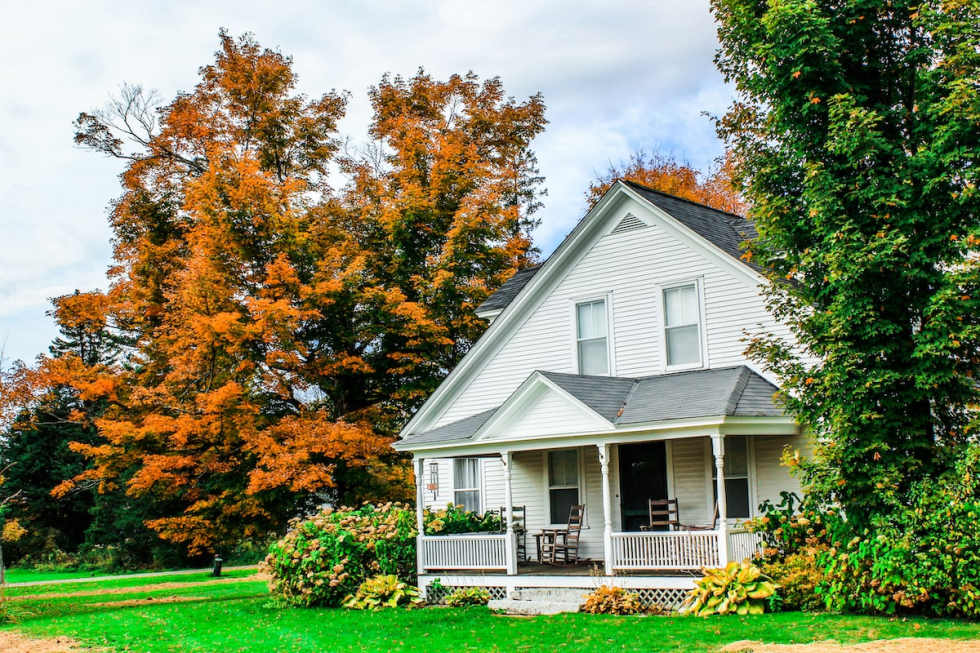
Ready to move to Vermont, where forests, skiing, and maple syrup is plentiful? Register for Apartment List and start exploring popular neighborhoods and apartment complexes today.
Vermont's summers are warm, humid, and average in the mid 70s. Winners are harsh with lows of 9 degrees. Despite the amount of snow Vermont gets, locals love getting out to ski and enjoy winter recreation. Fall and spring are filled with colorful leaves and blooms and make an ideal backdrop for annual festivals.
Vermont’s time zone is Eastern Standard/Daylight Time (EST and/or EDT), depending on the time of year. It is also Greenwich Mean Time - 4 (GMT-4), the same time as New York City.
Vermont's stunning outdoors offer the perfect landscape for year-round fun. Locals explore the Burlington Bike Path, Lake Champlain, Moss Glen Falls, and the Adirondacks. Beyond the great outdoors, Burlington Church Street Marketplace offers a flea market, shops, dining, and more. Or savor the spirits at The Saxtons Distillery is the spot for sapling maple bourbon and snowdrop gin, among other local concoctions.
Vermont's relatively low cost of living, gorgeous outdoors, skiing, and cozy towns make the state an appealing place for newcomers. Or you can head into cities like Burlington for arts, culture, and dining.
The pros of living in Vermont include the reasonable rents, affordable lifestyle, and great outdoors. There's also a growing food scene and all of the Vermont cheddar and syrup you can want. Some of the cons include long, cold winters and small-town living.
Whether you want to live in a rural area or the city, you can find a place in Vermont for you. Some of the best cities to move to in Vermont include Rutland, Essex Junction, Burlington, and South Burlington. Each offers their own unique flair, price points, attractions, and dining. However, Rutland will be among the cheapest places to live in Vermont and South Burlington the priciest.
Vermont’s affordability and outdoor recreation attract newcomers looking for a slower pace of life. Despite all the skiing and hiking surrounding you, there are also breweries, dining, attractions, and year-round events to choose from.
Vermont's economy centers around tourism, manufacturing, agriculture, and service sectors. The unemployment rate in Vermont is 3.3%, which is significantly lower than the U.S. average of 6%. Overall, the job growth in Vermont is slow and steady, with a promising outlook.
Vermont is home to 22 colleges and universities and four out-of-state colleges with Vermont campuses. Some of the state's most renowned institutions include the University of Vermont, Castleton, Champlain College, Middlebury College, and Norwich University. Whether you want to study criminal justice or conservation and social sciences, you can find a degree program in Vermont.
Vermont is filled with outdoor recreation opportunities, including skiing, biking, and hiking. Locals enjoy biking along the Burlington Bike Path, a converted railway converted in the 1970s offering views of Lake Champlain and the Adirondacks. Stops like Moss Glen Falls also attract visitors to its camping, boat cruises, golfing, and hiking.
Beyond the great outdoors, Burlington Church Street Marketplace offers a flea market, boutiques, pubs, and restaurants. For delicacies like sapling maple bourbon shops, the Saxtons Distillery produces innovative spirits.




In unit laundry, Pet friendly, 24hr maintenance, Carport, and Recently renovated
In unit laundry and Pet friendly